June 16, 2025 | 23:33 GMT +7
June 16, 2025 | 23:33 GMT +7
Hotline: 0913.378.918
June 16, 2025 | 23:33 GMT +7
Hotline: 0913.378.918
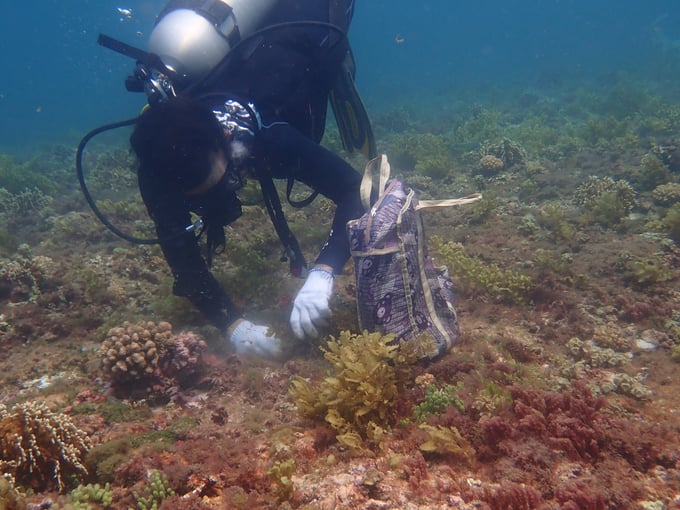
Dive to the bottom of the sea to collect seaweed breeds. Photo: CD.
Mr. Do Anh Duy, an officer of the Research Institute for Marine Fisheries - Head of the project "Research on the ability to restore seaweed in Ly Son island, Quang Ngai province," said that this sea used to have many corals and seaweeds. The seagrass is very beautiful. But due to over-exploitation by people, the resources have declined sharply, and many places on the seabed are bare and rocky.
"Only when Ly Son Marine Protected Area was established in 2017 did the ecosystem's value and marine life be disseminated and educated to people and communities consciousness is raised. They know how to love and appreciate the products bestowed by nature," Mr. Duy said.
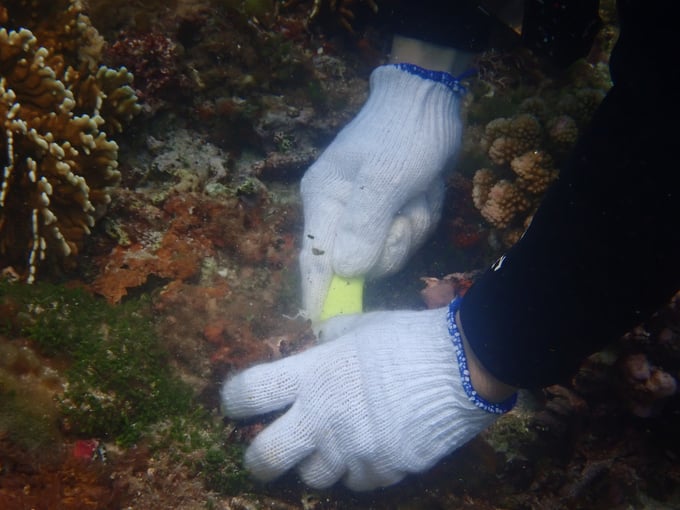
Collect seaweed breeds. Photo: The Research Institute for Marine Fisheries.
According to Mr. Duy, seaweed is a lower plant, growing and dying seasonally, leaving spores at the end of the season. Seagrass is a higher plant, grows like a dry plant, and is available all year round. However, seagrasses in Vietnam are declining sharply, especially in coastal areas, which are subject to many human impacts, such as Tam Giang - Cau Hai lagoon of Thua Thien - Hue Province or Gianh River area of Quang Binh Province.
Coral, seaweed, and seagrass are shelters for many types of mollusks, fish, shrimp, reptiles, and also a place for them to feed or breed. Seaweed has a rather special relationship with corals. As corals grow, they pause. When corals die standing in mass (dead keep their shape), they bloom, lush right there.
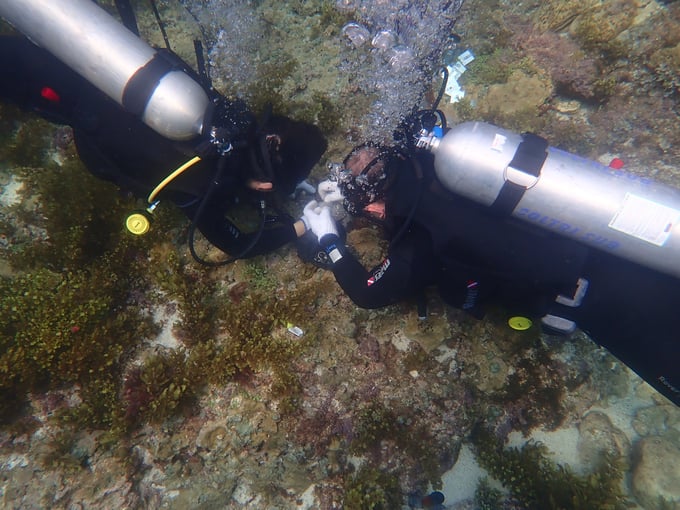
Scientists are collecting seaweed breeds. Photo: The Research Institute for Marine Fisheries.
According to the research results of Nguyen Huu Dai and his partner in 1993, in the coastal waters of Phu Quy island of Binh Thuan province, a seaweed often grows in the canopy with a large diameter of 30-40 cm. But by 2015, they were very few or existed as small, sparse clusters.
Many other areas, previously recorded with seaweed, such as Phu Quoc, Con Dao, Phu Quy, Truong Sa, and Hai Van - Son Cha... are now no longer present or otherwise distributed scattered with no significant amount.
One of the reasons why this species of seaweed is exploited to the point of exhaustion is that its selling price in dry form is up to VND 250,000 - VND 300,000/kg. For-profit, people raced to exploit it to the point where the seaweed could not regenerate.
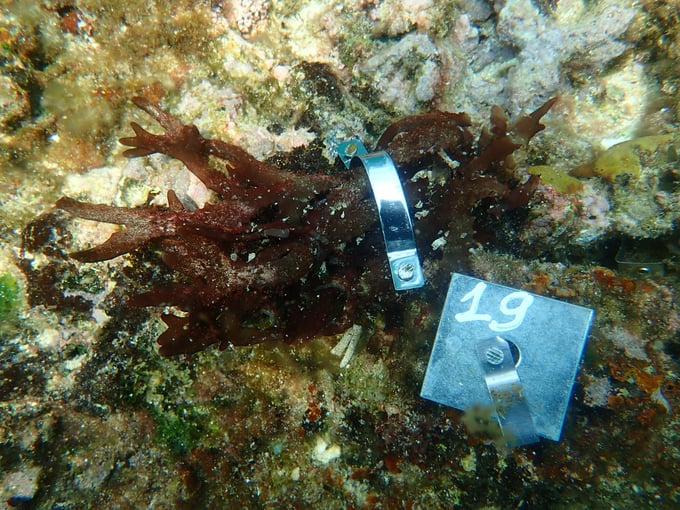
A close-up of seaweed breeds has just been transplanted to the seabed. Photo: DDT.
Besides, scientific research shows that seaweed has a significant agar content, which is the primary raw material for making many products. It can be used as food (manifest, tea, jam, drink...); As raw materials for processing minerals, plant growth substances (auxin, cytokinin, gibberellin); Fishing bait, fertilizer (coconut, coffee); Making medicinal herbs (treating digestive disorders, diuretics, cough, chest tightness)…
Once classified as endangered in the Redbook in 2007, seaweed was fortunate to find Ly Son Sea - where conditions are suitable for recovery. People can re-exploit this species of seaweed, with an output of several tens of tons per year.
In 2017 and 2018, Do Anh Duy and Do Van Khuong focused on researching and finding out that the main distribution area of seaweed is in the low-tidal zone and the upper part of the sub-tidal zone.

Scientists are working underwater. Photo: The Research Institute for Marine Fisheries.
In addition, the scientists also discovered that the regeneration feature of this species is mainly attached to the basal body, thanks to the disc-shaped nodules formed on the undersides of the branches. Based on this, the method of permanent inoculation of seaweed on a natural substrate was developed.
In the world, there has been no research on the restoration and development of seaweed, so the authors did much research. Anh Duy set a goal of planting seaweed to recover by permanent transplanting on the natural bottom with an area of 200 m2 at 2 locations in 2 years, with a survival rate of over 60% and a yield of around 500 g/m2.
In the first year of 2023, they planted more than 100m2. In a few months, the scientists scheduled an examination to evaluate the ability of the algae to grow. In addition, they researched more risks during the recovery process, such as Hard bottom, difficulty to nail seaweed; The transplanted seaweed being loose, washed away, or the fish eating…
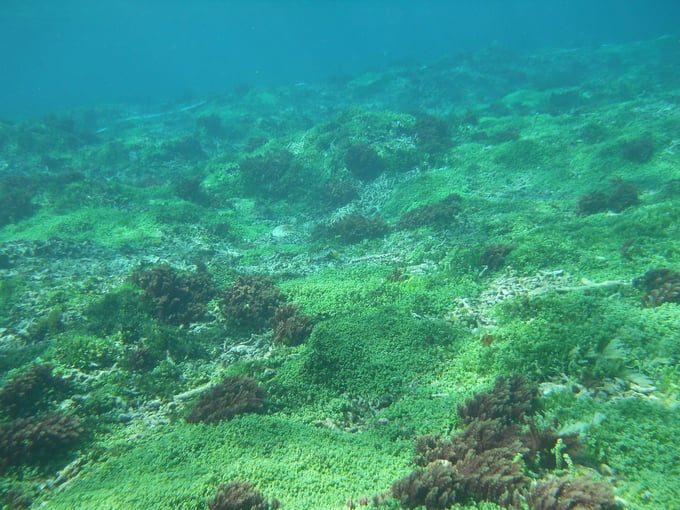
A beautiful seaweed carpet. Photo: The Research Institute for Marine Fisheries.
Anticipating those situations, scientists chose the dead reef bottom to nail them. This place has high ruggedness, suitable for the ecology of seaweed distribution.
Initially, the research team found a recovery formula: Rehabilitation of seaweed in areas with low wave height, moderate flow, and good water circulation; Choose a depth of about 3-4 m, and make sure that some fish species like to eat algae on the surface such as snakehead, bald fish are difficult to contact.
In 2018, the total production of seaweed in the world was 32.3 million tons, of which cultivated seaweed accounted for 97%. Among seaweeds, "Gracilaria eucheumoides" seaweed is considered to have the top economic value.
Translated by Ha Phuc
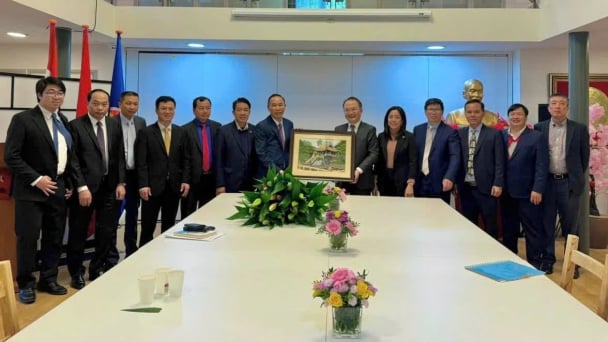
(VAN) The working delegation from the Ministry of Agriculture and Environment conducted an important trip to the Netherlands to strengthen strategic partnerships and sustainable development in the agricultural sector.
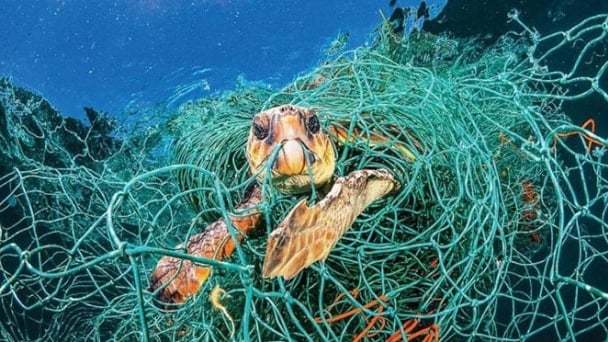
(VAN) The letter ‘A Plea from the Ocean’ not only evokes emotion but also awakens the human conscience to the responsibility of protecting life on Earth.

(VAN) The Department of Agriculture in South Africa has announced the country’s first mass vaccination of poultry to prevent local birds from contracting avian influenza.

(VAN) Establishment of the Mekong Delta Regional Agricultural Linkage Center, aiming for a closed value chain, deep processing, trading platforms, and international market connectivity.

(VAN) Gia Lai province has recently recorded 460 rare species of animals and plants, contributing to forest conservation and biodiversity planning in the region.

(VAN) Ms. Caroline Beresford, New Zealand Ambassador to Vietnam, expressed confidence that agricultural cooperation between Vietnam and New Zealand will develop sustainably, be climate-resilient, and promote gender equality.

(VAN) Vietnam reaffirms its commitment to international cooperation in fostering sustainable and responsible fisheries while ensuring resilient livelihoods for small-scale fishing communities.